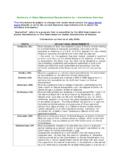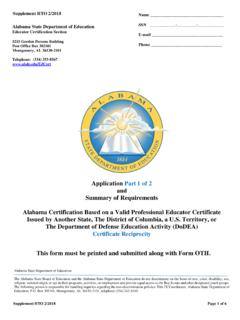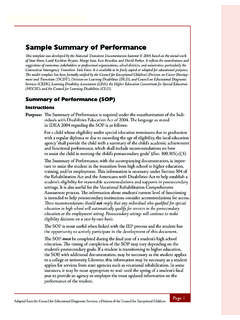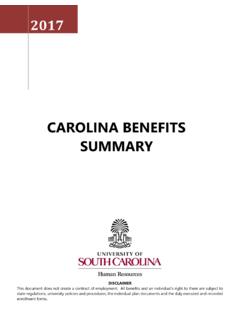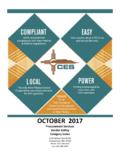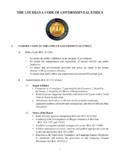Transcription of AB 705 (Irwin) - Seymour-Campbell Student …
1 AB 705 ( irwin ) - Seymour-Campbell Student success Act of 2012 : assessment . chapter 745, statutes of 2017. AB 705 requires community college districts to maximize the probability that a Student will enter and complete transfer-level coursework in math and English within a one-year timeframe by utilizing assessment measures that include high school performance to achieve this goal. What is the intent of AB 705? The text of this bill can be read in full here. The Legislature provided a number of findings, and declarations to guide system and college implementation of this new law. Included in the findings and declarations, the Legislature noted: assessment instruments and placement policies have serious implications for equity, since students of color are more likely to be placed into remedial courses; and, students placed into remediation are much less likely to reach their educational goals. Evidence suggests that community colleges are placing too many students into remediation and that many more students would complete transfer requirements in math and English if allowed to bypass remedial prerequisite courses and enroll directly in transfer-level English and math courses.
2 The goal of AB 705 is to ensure that students are not placed into remedial courses that may delay or deter their educational progress unless evidence suggests they are highly unlikely to succeed in the college-level course. Community colleges are prohibited from requiring students to take a prerequisite course unless they are highly unlikely to succeed in a higher-level course without it, pursuant to Section 55003 of Title 5 of the California Code of Regulations, but this policy is not followed in practice. Colleges are required to use multiple measures in determining course placement, pursuant to Section 55522 of Title 5 of the California Code of Regulations, but Title 5 of the California Code of Regulations does not provide enough guidance in the use of multiple measures to ensure that students are not excluded from courses in which they can be successful. Evidence suggests that when used as the primary criterion for placement, assessment tests tend to under-place students ; and, a Student 's high school performance is a much stronger predictor of success in transfer-level courses than standardized placement tests.
3 Will the CCCCO provide guidance and definitions to colleges? AB 705 authorizes the CCC Board of Governors to establish regulations governing the use of high school performance and other measures, instruments, and placement models to ensure college implementation meets the goals of this legislation. To advance this work, the Chancellor's Office will be assembling an AB 705 implementation team to assist with the guidance and practices associated with the legislation. The CCCCO is committed to ongoing support for colleges and keeping colleges informed about training and technical assistance available for successful multiple measures approaches, including providing information to explain how to access the training and technical assistance for upcoming assessments. For now, additional information and background resources for various aspects of multiple measures and their use can be found on the Chancellor's Office website. When does AB 705 become effective? AB 705 was signed by the Governor on October 13, 2017, and will take effect on January 1, 2018.
4 While the statute becomes effective on January 1, 2018, the CCCCO will issue guidance that provides phased-in implementation. The CCCCO is committed to ongoing support for colleges and keeping colleges informed about training and technical assistance available for successful implementation of AB 705. What is a college required to do in placing a Student under the provisions of AB 705? A college is required to maximize the probability that a Student will enter and complete transfer- level coursework in English and math within a one-year timeframe, and use, in the placement of students into English and math courses in order to achieve this goal, one or more of the following measures: (a) High school coursework (b) High school grades (c) High school grade point average Is a college required to use multiple measures? Yes, a college is required to use multiple measures, and may do so in such a manner that either of the following occur: (a) Low performance on one measure may be offset by high performance on another measure.
5 (Compensatory). (b) The Student can demonstrate preparedness and thus bypass remediation based on any one measure. (Disjunctive). Multiple measures must be used in a way that maximizes the probability that a Student will enter and complete transfer-level coursework in English and math within a one-year timeframe. What if a college is unable to obtain or otherwise use high school performance information? When a college is unable to obtain high school transcript data, or when that data is not available or logistically problematic to use, a college may use: (a) Self-reported high school transcript information; or, (b) Guided placement, including self-placement for students . Currently, CalPASS Plus has data sharing agreements that cover about 80% of California public high school students . The California Community Colleges Chancellor's Office (CCCCO) is working with the California Department of Education (CDE) to expand the existing Memorandum of Understanding (MOU) and provide access to course and grade data available in the California Longitudinal Pupil Achievement Data System (CALPADS).
6 How do these requirements apply to students who seek a goal other than transfer? This legislation should not be interpreted to require students to take coursework that is not applicable to their goals. For students who seek a goal other than transfer, and who are in certificate or degree programs with specific requirements that are not met with transfer-level coursework, a college maximizes the probability that a Student will enter and complete the required college-level coursework in English and mathematics within a one-year timeframe. If necessary, the CCCCO and Board of Governors will provide additional guidance and regulations on this matter. How does this legislation impact remedial coursework requirements? Pursuant to AB 705, a college shall not require students to enroll in remedial English or math coursework that lengthens their time to complete a degree unless placement research, that includes consideration of high school grade point average and coursework, shows that those students are highly unlikely to succeed in transfer-level coursework in English and mathematics.
7 A college may require students to enroll in additional concurrent support, including additional language support for ESL students during the same semester that they take a transfer-level English or mathematics course, but only if it is determined that the support will increase their likelihood of passing the transfer-level English or mathematics course. The college shall minimize the impact on Student financial aid and unit requirements for the degree by exploring embedded support and low or noncredit support options. The CCCCO is committed to providing support for colleges and keeping colleges informed about training and technical assistance available for successful implementation of AB 705. and will provide additional guidance and support to improve remedial education pathways. How does this legislation affect English as a Second Language courses? AB 705 finds that instruction in English as a second language (ESL) is distinct from remediation in English. students enrolled in ESL credit coursework are foreign language learners who require additional language training in English, require support to successfully complete degree and transfer requirements in English, or require both of the above.
8 Under the provisions of AB 705, colleges shall use evidence-based multiple measures for placing students into (ESL) coursework. For those students placed into credit ESL coursework, their placement should maximize the probability that they will complete degree and transfer requirements in English within three years. If necessary, the CCCCO and Board of Governors will provide additional guidance and regulations on this matter.
